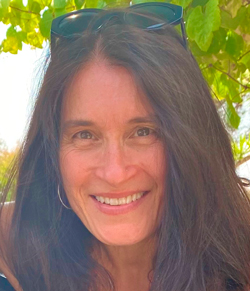The Collective Body in Soviet Visual Culture

Accession lecture by Novo Nordisk Visiting Professor Christina Kiær, Department of Art and Cultural Studies.
Abstract
The realistic paintings and mass images of collective bodies that dominated early Soviet visual culture are usually dismissed as propaganda, in contrast to the celebrated forms of abstraction and montage pioneered by revolutionary avant-gardists like Malevich, El Lissitzky and Rodchenko. This lecture questions the binary of avant-garde vs. propaganda to argue that the Socialist Realist aesthetic is not the enemy of revolutionary art, but an alternate experimental aesthetic that, at its best, activates affective forces for collective ends—in ways that speak to our 21st C. art world that welcomes figurative political art and social practice. The talk will pay particular attention to the artist Aleksandr Deineka and his depictions of women and Blacks as representatives of the international proletarian collective.

About Christina Kiær
Christina Kiær is a professor of art history at Northwestern University (Chicago) and the Novo Nordisk Guest Professor at IKK in 2021-22. Her research on Soviet art and visual culture challenges the myth of the avant-garde and expands our definitions of modernism by uncovering the aesthetic significance of visual objects usually dismissed as kitsch or propaganda. Her publications include books on Russian Constructivism, Soviet posters and film, and Socialist Realist painting; her current research project is “An Aesthetics of Anti-racism: African Americans in Soviet Visual Culture.”
[in Danish]
Christina Kiær er professor i kunsthistorie på Northwestern University i Chicago og Novo Nordisk Gæsteprofessor på IKK i 2021-22. Hendes forskningsspeciale er sovjetkunst, hvor hun arbejder med begreber omkring oplevelsen af revolution, socialisme og det kollektive, med vægt på krop, køn, forbrug, begær, affekt og, i sit seneste projekt, race. Tråden gennem hendes forskning er at stille spørgsmål til myten om avant-garden og åbne for en forståelse af hidtil afviste kunstformer, der er faldet ind under kategorier som hverdagsskrammel, propaganda og socialistisk realisme.
Map of South Campus
View directions.
View on map of the Faculty of Humanities - South Campus.
View map of South Campus (pdf).
